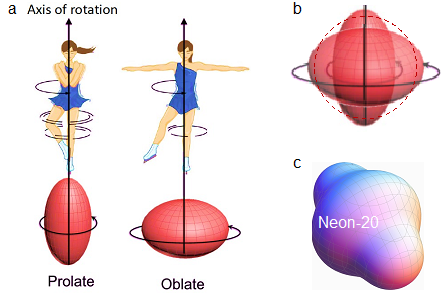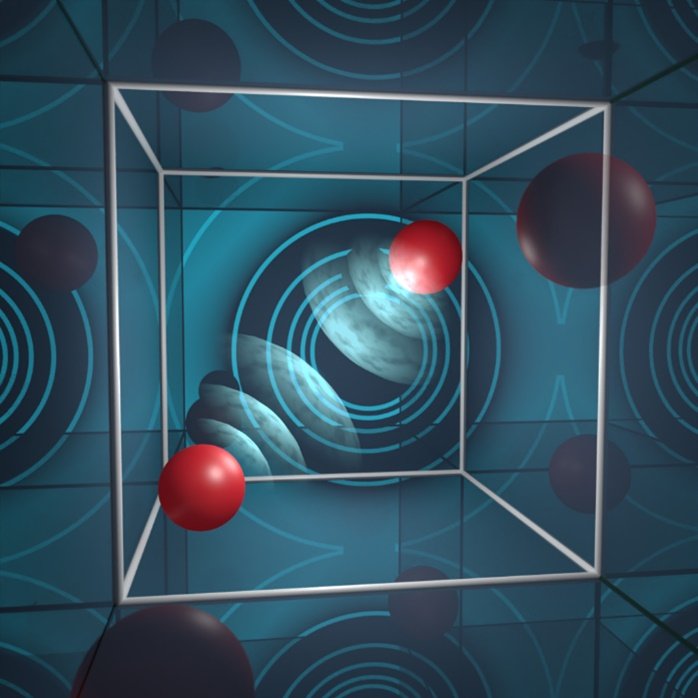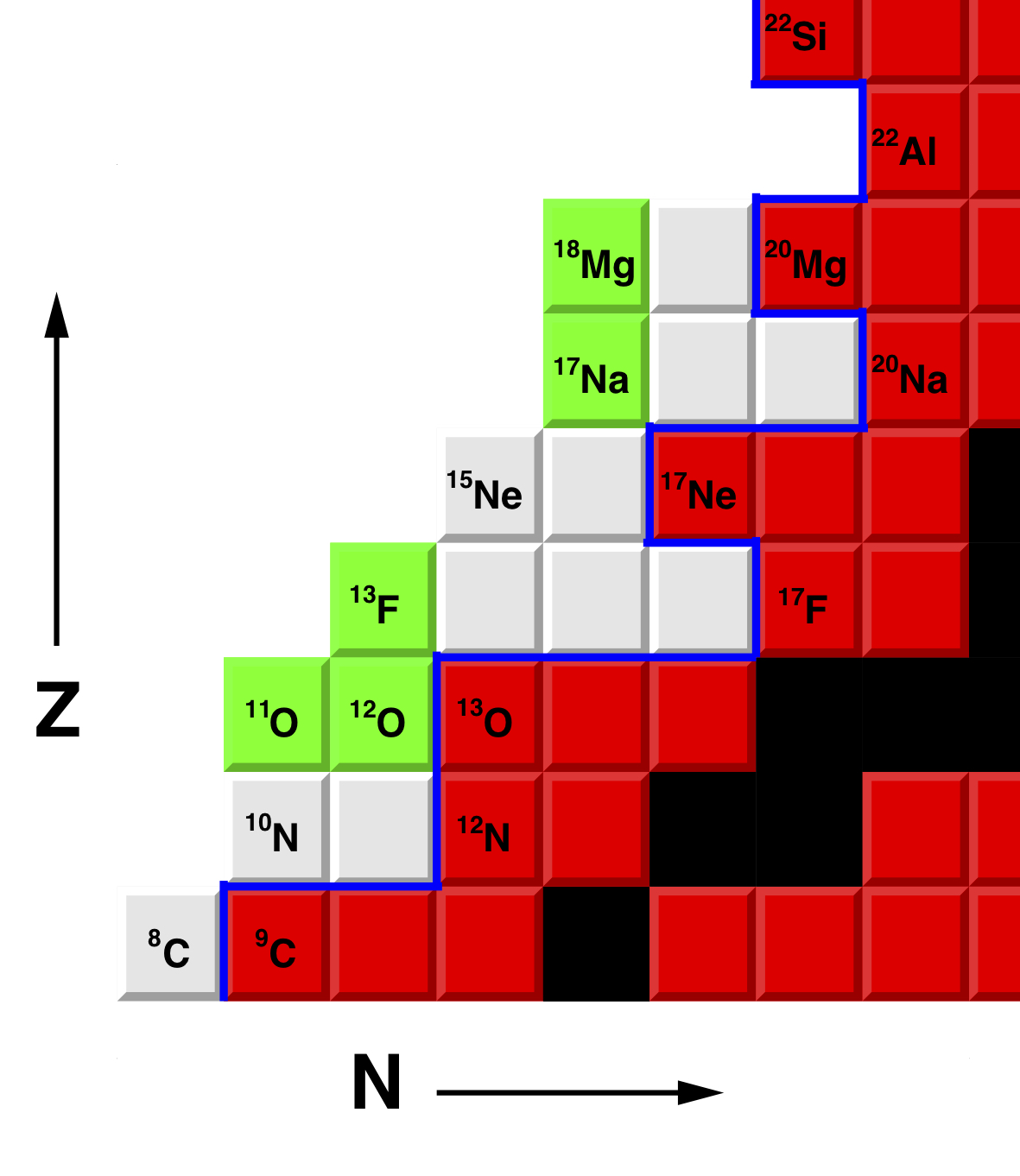Scientists have demonstrated a new way to use high-energy particle smashups at the Relativistic Heavy Ion Collider (RHIC) to reveal subtle details about the shapes of atomic nuclei. The method is complementary to lower energy techniques for determining nuclear structure. It will add depth to scientists’ understanding of the nuclei that make up the bulk of visible matter.
Tag: nuclear structure

Resolved: A Long-Debated Anomaly in How Nuclei Spin
Atomic nuclei vary in shape from prolate to oblate, and these shapes have different moments of inertia, such that it takes different amounts of energy to spin different nuclei. Previous research has suggested that the amount of energy to spin some nuclei ever faster changes unexpectedly due to an anomalous increase in the moment of inertia, possibly because nuclei start to bulge out.

Understanding Charged-Particle Bound States in Periodic Boxes
Physicists use methods called finite-volume simulations with periodic boundary conditions to model the nuclei protons and neutrons can form. This new work solves a long-standing and fundamental problem for electrically charged systems in these “periodic boxes.” It derives the mathematical equation that describes how the properties of these electrically charged systems depend on the size of the simulation volume.
Decoding the Proton’s Response to an External Electromagnetic Field
The proton is the only composite building block of matter that is stable in nature, making its properties key to understanding the formation of matter. A team of physicists measured the proton’s electric polarizability, which characterizes the proton’s susceptibility to deformation, or its “stretchability,” in the presence of a photon’s electromagnetic field. The results reveal a puzzling new structure – a bump in the polarizability that nuclear theory cannot explain.
Researchers reveal the origin story for carbon-12, a building block for life
After running simulations on the world’s most powerful supercomputer, an international team of researchers has developed a theory for the nuclear structure and origin of carbon-12, the stuff of life. The theory favors the production of carbon-12 in the cosmos.

Researchers observe new isotope of fluorine
Researchers at Washington University in St. Louis reported the first observations of a new form of fluorine, the isotope 13F, described March 30 in the journal Physical Review Letters. They made their discovery as part of an experiment conducted at the National Superconducting Cyclotron Laboratory at Michigan State University (MSU).